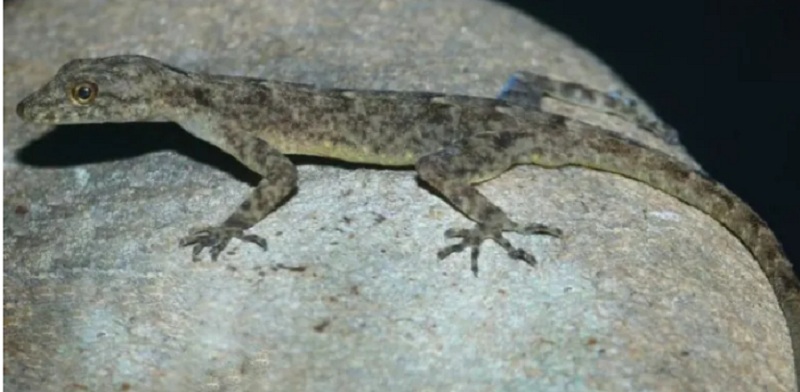Guwahati: A new species of diurnal gecko has been discovered on the banks of the Brahmaputra River in Assam.
The new gecko species has been named Cnemaspis brahmaputra, after the Brahmaputra River.
Unlike most lizards of its kind found across the northeastern part of India, the Cnemaspis brahmaputra found at Dirgheswari Temple on the northern bank of the river facing Guwahati is non-nocturnal.
“New addition to Assam’s rich biodiversity! A new species of day gecko has been discovered on the banks of the Brahmaputra & named Cnemaspis Brahmaputra,” Assam Chief Minister Himanta Biswa Sarma said in a post on X.
“This is only the 2nd species of such kind recorded in Northeast,” he said, congratulating the researchers behind this discovery.
The discovery has been documented in the latest issue of Taprobanica: The Journal of Asian Biodiversity.
The authors are Amit Sayyed of the Maharashtra-based Wildlife Protection and Research Society; A.A. Thasun Amarasinghe of Indonesia’s Research Centre for Biosystematics and Evolution; Madhurima Das and Rupankar Bhattacharjee of Assam Don Bosco University’s Department of Zoology; and Jayaditya Purkayastha of Help Earth, a biodiversity organisation specialising in reptiles.
The newly identified species belongs to the Cnemaspis podihuna clade, a group of small, diurnal geckos previously believed to be largely restricted to Sri Lanka.
Its discovery in Assam strengthens the evidence for an ancient biogeographic link between Sri Lanka and India’s northeast, reflecting historical faunal exchanges across the Indian subcontinent.
The new species is genetically and morphologically distinct from its Sri Lankan relatives, showing significant evolutionary divergence.
It has a larger body size, fewer mid-body scale rows, more ventral scale rows across the belly, no tubercles on the lower flanks, and three enlarged rows of thigh scales aligned with the femoral scale row.
Cnemaspis brahmaputra is the second species of the genus Cnemaspis known from the northeastern region. The first, Cnemaspis assamensis, was described in 2000.
Both species are members of the podihuna clade and are restricted to the Brahmaputra River valley. They occur on opposite banks of the river and have significant genetic differences.
“We decided to name the new species of gecko after the Brahmaputra, as it is a major ecological and cultural artery of northeast India. The river has played a crucial role in shaping the region’s biodiversity, serving as both a geographic barrier and a corridor for evolutionary processes,” Jayaditya Purkayastha said.















